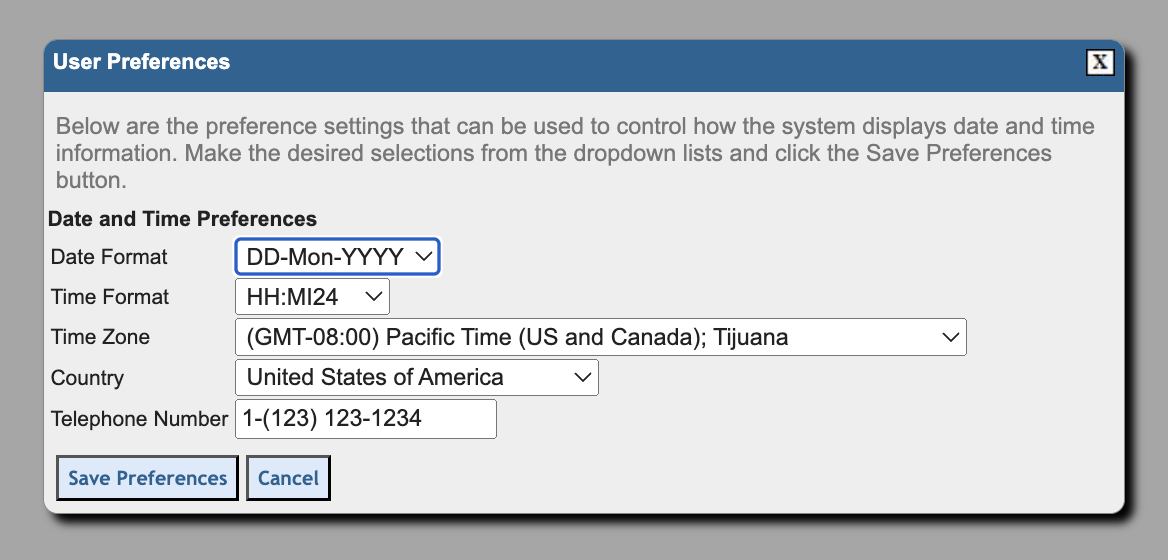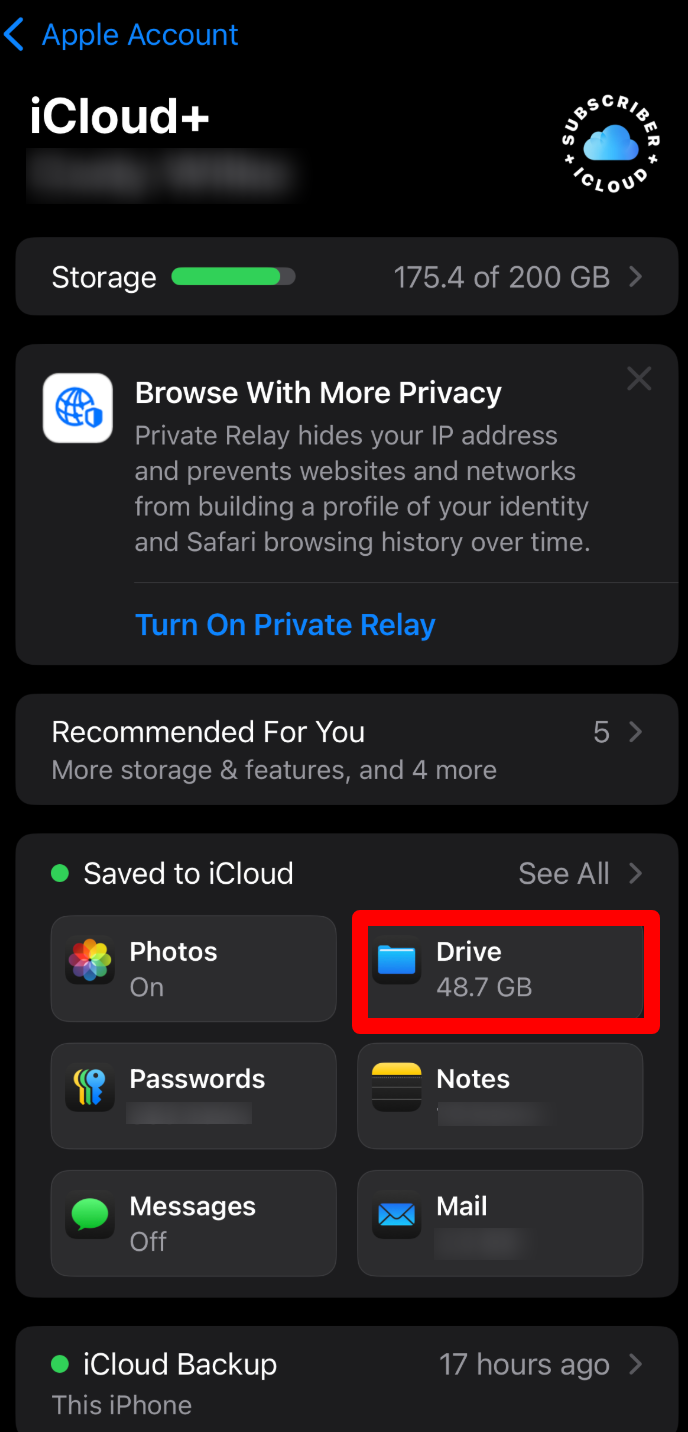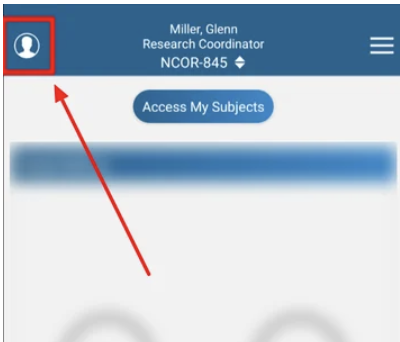The system will ask each user to set or verify specific information as a new user when signing in the very first time. That information includes:
Preferred time format
Timezone
Privacy Policy agreements
Phone number (optional)
Why is this important? The system needs to know each user's timezone as it applicable to data entry audit trails and time-based logic. The time preference allows users to set how they want to view time-based data (12-hr or 24-hr format).
A prompt will display until each of the preferences are confirmed. To later change preferences, access them as shown below for both the web and the app.
As an option, a phone number can be saved for your user account. This is used for 2-factor sign in and notifications. Email will be the default mode of messaging if a phone number is not entered.
NOTE: If preferences are not updated, users will see date fields in DD-MON-YYYY format and time fields in 24-hour format. Time zones are required to be set by each user when signing in for the first time. If a timezone is not set, the system will default to GMT.
The date and time format must be set by each user individually. It cannot be forced as a single format for all users in a study.
Web Browser
.png)

Mobile App
iOS | Android |
|
|
iCloud on iOS Devices
Apple iOS mobile devices require a special step to allow TrialKit to access the file system on the device for the purpose of uploading files from the device, or downloading files from TrialKit to the device. To be sure your settings have TrialKit enabled for iCloud, go to the device settings > user profile at the top > iCloud > Drive > Apps


Languages
Note, TrialKit does not store a user’s language. This must be set on each device or browser used.
The web browser will translate text to any browser-supported language based on the browser settings.
For users on the TrialKit App, when the app is first installed, it will detect the language of the device based on the device settings, and display text throughout the app accordingly. If your language is not displayed, it may not be supported at this time.
Android users can easily check and change their language within the user profile menu from the home screen within TrialKit.

User Preference FAQ
Q. Why does the visit date on some forms not match the time in the audit trail
A. Visit dates can have different meanings depending on how the form is configured by the study Builder. In many cases, it's intended to equal the date of collection. Some Builders will even have it auto-populate with the current date and time of the user who is entering the form, based on that user's timezone. On the other hand, the audit trail date and time get stamped when the form is saved - which is displayed in server time on the web browser or the viewer's own timezone on the mobile app.
Q. We set my own date format to be DDMMYYYY as a guideline. But after completing the questionnaire, the date viewed in a colleagues system is YYYY-DD-MM
A. Each user can set their own preference for date format. It does not impact the date and can be changed at any time by the person viewing the data.
.png)
.png)